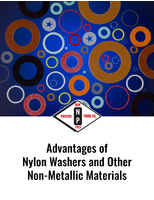ASTM Standard addresses safe application of 3D imaging.
Press Release Summary:
ASTM E2641, Practice for Best Practices for Safe Application of 3D Imaging Technology, presents plan for using equipment correctly, addressing such concerns as ensuring that laser beams do not cause distractions for motorists and equipment operators. In addition, ASTM E2641 covers context of on-site safety, including use of ladders and scaffolding in projects, understanding specifics of highway applications, and knowing whether there are hazardous areas in processing plants.
Original Press Release:
Safe Application of Three Dimensional Imaging Technology Is the Subject of a New ASTM International Standard
W. CONSHOHOCKEN, Pa., -Three dimensional image system technology is now used in a wide variety of industries, including construction, mapping, manufacturing, mining and forensics. For all of these industries, safe usage of 3D imaging equipment is a top priority. However, until the approval of a new ASTM International standard, no safety guidelines specifically oriented toward 3D image system technology existed.
The ASTM standard that fills this safety gap, ASTM E2641, Practice for Best Practices for Safe Application of 3D Imaging Technology, was developed by Subcommittee E57.03 on Guidelines, part of ASTM International Committee E57 on 3D Imaging Systems.
While laser equipment is classified by manufacturers with respect to eye safety, it is up to the operators of the equipment to use the equipment in a safe way that is consistent with classification. ASTM E2641 presents a plan for using equipment correctly, addressing such common sense concerns as ensuring that laser beams do not cause distractions for motorists, equipment operators and others.
In addition, ASTM E2641 covers the context of on-site safety. Use of ladders and scaffolding in a project, understanding the specifics of highway applications and knowing whether there are hazardous areas in processing plants are all situations that need to be considered for the safe operation of 3D image system equipment
"No two applications are quite alike," says Ted Knaak, president, Riegl USA Inc., and chairman, E57.03. "ASTM E2641 takes the operator and user through a step-by-step process to develop a suitable safety program for their intended application."
According to Knaak, developing a safety standard was the first priority for the subcommittee. Knaak says the standard was developed with the knowledge that it will be serving the many types of industries that employ 3D imaging systems. "ASTM E2641 was written in such a way as to be easily understood and flexible," says Knaak. "The subcommittee recognized that, given the diversity of applications, no single specific safety guidelines would be appropriate."
The new standard presents a practical approach to the safe operation of 3D imaging systems as well as information on the development of safety plans specific to an industry or site.
"It is an easily read and understood document that guides the user through the process but does not dictate a specific approach," says Knaak. "We foresee ASTM E2641 facilitating a common dialogue among all parties concerned with the safe application of these systems. Both service providers and their customers can follow a basic set of guidelines in the development and evaluation of a safety plan or more simply in the safe application of such equipment in their respective environments."
With ASTM E2641 now approved, E57.03 is developing a proposed new standard, WK28005, Guide for the Definition of 3D Image Data Requirements Necessary to Meet Project Objectives. Suppliers and users of 3D image data, specifically those responsible for technical output and with knowledge of cost and benefits, are encouraged to participate in the ongoing development of WK28005.
To purchase ASTM standards, visit www.astm.org and search by the standard designation number, or contact ASTM Customer Relations (phone: 610-832-9585; service@astm.org). ASTM International welcomes and encourages participation in the development of its standards. For more information on becoming an ASTM member, visit www.astm.org/JOIN.
ASTM International is one of the largest international standards development and delivery systems in the world. ASTM International meets the World Trade Organization (WTO) principles for the development of international standards: coherence, consensus, development dimension, effectiveness, impartiality, openness, relevance and transparency. ASTM standards are accepted and used in research and development, product testing, quality systems and commercial transactions.
ASTM Committee E57 Next Meeting: June 6-8, June committee week, St. Louis, Mo.
Technical Contact: Ted Knaak, Certainty 3D LLC, Orlando, Fla., Phone: 407-248-0160; ted.knaak@certainty3d.com
www.astm.org



